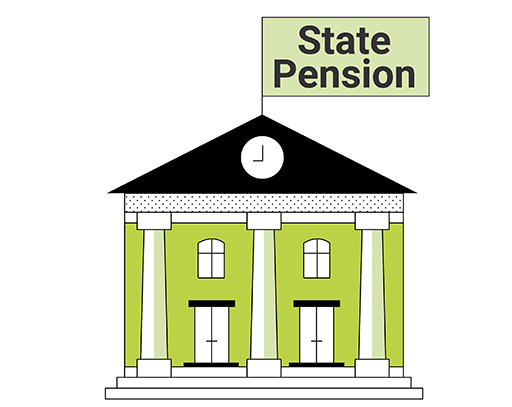2 State and private pensions – some key points
Before you work through the pensions exercise in the next section let’s look briefly at some key details about pensions.
The State Pension
Your entitlement to state pension will depend on your National Insurance contribution record with (currently) 35 years of contributions needed for the full state pension. Getting an accurate projection for your state pension can be done easily via the link below. Just focus on the details of the ‘new’ state pension – sometimes referred to as the ‘flat-rate’ state pension. If you think you will fall short of getting a full pension you could make additional National Insurance payments to top up your record.
Check your State Pension [Tip: hold Ctrl and click a link to open it in a new tab. (Hide tip)] .
The state pension age (SPA) has changed in recent years. Periodically this age is reviewed taking into consideration changes in life expectancy and how much the state pension costs the government. Don’t be surprised to find the SPA changing again in the coming years.
Defined Benefit (DB) and Defined Contribution (DC) pensions
If you are lucky enough to be in a defined benefit pension scheme through work the pension you get is usually contractually linked to the number of years you are a member and your income whilst in the scheme. The higher the number of years in the scheme and the higher your salary the greater will be the pension you get.
With a defined contribution pension (or ‘money purchase’) scheme you build up a pot of the money to provide you with an income in retirement. You can currently start taking money from your pension pot from the age of 55 (increasing to 57 from April 2028), but the longer you leave the money to build up the better will be the return when you do retire.
With these types of pension savings the final size of the pot depends on how much you and your employer pay in, how investments perform and any charges. With a defined contribution pension you have a choice of ways in which you can invest the money when you retire to generate an income. Some opt to take lump sums, or a regular income, some take an annuity (an annual income) where the amount you get is linked to life expectancy and the level of interest rates, and some take a mixture.
To learn more about this - take a look at the Open University course Retirement Planning Made Easy. The link to this is in the Additional Resources section of the course.
Now let’s look at your retirement lifestyle and whether you’ll have enough pension income to provide it.

